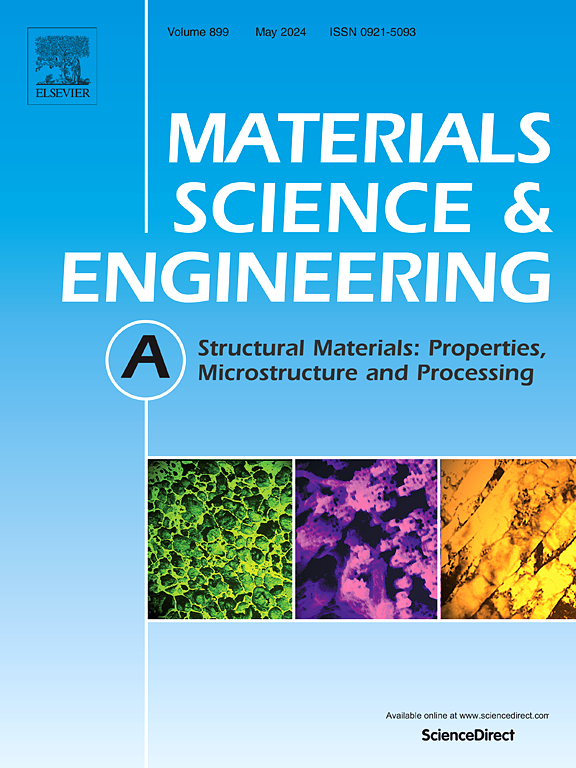Analysis of abnormal grain growth in 6061 aluminum alloy during high-temperature solution treatment following forging
IF 6.1
2区 材料科学
Q1 MATERIALS SCIENCE, MULTIDISCIPLINARY
引用次数: 0
Abstract
The conventional forging process for 6061 aluminum alloy typically involves hot forging followed by solution heat treatment (SHT). However, during this process, the grain size can rapidly grow to the millimeter scale, resulting in uncontrollable and undesired coarse grains. In this study, the misorientation at the growth front of abnormal grains in forged 6061 aluminum alloy during solution heat treatment was measured, estimating the grain boundary energy to satisfy the energy state conditions for triple junction line wetting. This indicates that some particles, distant from the abnormally grown grains, are actually identical to the abnormally grown grains and are three-dimensionally connected. An improved combined process was proposed to suppress abnormal grain growth: replacing air cooling with water quenching after hot forging and adding room-temperature deformation prior to heat treatment. The lower limit of single-pass deformation is set between 10 % and 20 %, with 20 % deformation in a single pass showing a noticeable suppressive effect on AGG without causing cracking, this approach ensures that even large free forgings, approximately 150 mm in cross-section, maintain normal grain structures in both the core and edge regions, the average grain size is approximately 80 μm.
6061铝合金锻后高温固溶处理中异常晶粒生长的分析
6061铝合金的传统锻造工艺通常是热锻后固溶热处理(SHT)。然而,在此过程中,晶粒尺寸可以迅速增长到毫米级,从而产生不可控和不希望的粗晶粒。本研究通过对6061铝合金固溶热处理过程中异常晶粒生长前沿的错取向进行测量,估算出满足三结线润湿能态条件的晶界能。这表明,一些远离异常生长颗粒的颗粒实际上与异常生长颗粒相同,并且是三维连接的。提出了一种抑制异常晶粒生长的改进组合工艺:热锻后以水淬代替空冷,热处理前加入室温变形。单道次变形的下限在10% ~ 20%之间,单道次20%的变形对AGG有明显的抑制作用,而不会引起开裂,这种方法可以确保即使是截面约为150 mm的大型自由锻件,在核心和边缘区域都保持正常的晶粒组织,平均晶粒尺寸约为80 μm。
本文章由计算机程序翻译,如有差异,请以英文原文为准。
求助全文
约1分钟内获得全文
求助全文
来源期刊

Materials Science and Engineering: A
工程技术-材料科学:综合
CiteScore
11.50
自引率
15.60%
发文量
1811
审稿时长
31 days
期刊介绍:
Materials Science and Engineering A provides an international medium for the publication of theoretical and experimental studies related to the load-bearing capacity of materials as influenced by their basic properties, processing history, microstructure and operating environment. Appropriate submissions to Materials Science and Engineering A should include scientific and/or engineering factors which affect the microstructure - strength relationships of materials and report the changes to mechanical behavior.
 求助内容:
求助内容: 应助结果提醒方式:
应助结果提醒方式:


